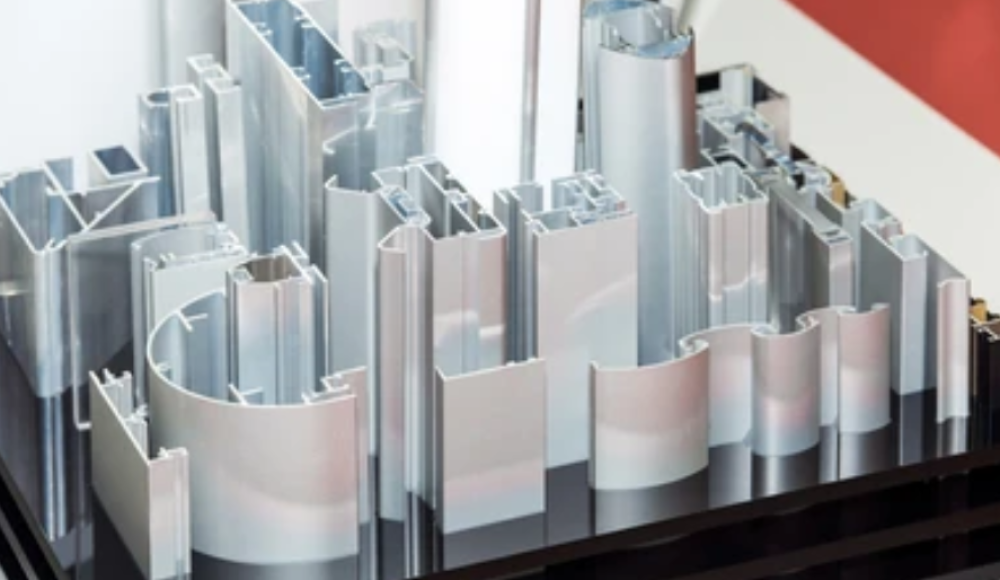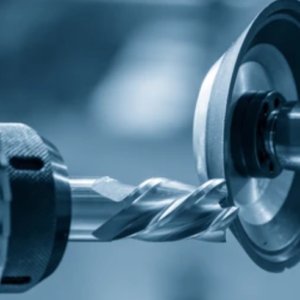Profile milling is one of the precision CNC milling techniques used industrially to produce various parts. This is most especially, it has many applications for curved surfaces. Using particular milling machines, this technique is precise and provides good surface quality. Profile milling is another vital process in the current manufacturing processes. Moreover, it is applicable for metals, plastics, or any composite product. So, in this article, you will have a general idea about profile milling and some of the most refined methods applicable to this task. Besides this, we will learn about the applications, and effective tips for the profile milling process.
What is Profile Milling?
Profile milling is a machining technique in which the tool, normally a cutter traverses to the outline of the part. It is applied for making intricate shapes, edges, and faces of any workpiece. Especially, it is popular for objects that need to be accurate in their details. This practice is common in products such as aerospace structures, automobiles, and molding industries. Besides this, it helps achieve complex geometrical features of the parts.
Types of Profile Milling Processes
The following are the different types of Profile Milling processes;
- 2D Profile Milling: Slicing from the XY plane and it has many applications when working with simple shapes, i.e. lines and outlines.
- 3D Profile Milling: Involves cutting along the X, Y, and Z axes as it is the best one for machining compound surfaces of a workpiece.
- Multiaxis Milling: It refers to the millionth axis, 4 or 5 axes to machine complex. Here, 3D shapes are very vital in modern technology.
How Profile Milling Process Works?
Profile milling is a subtractive manufacturing process. Here a cutting tool which is most commonly a milling cutter, is used to pass through a workpiece. So, it can give a desired contour. It commences with the clamping of the workpiece on the milling machine, or on other fixtures. In most cases, a computer numerical control (CNC) system controls the motion of the milling cutter. That operates in a predetermined manner.
Here’s how the profile milling process typically works:
1. Toolpath Programming
CAD/CAM software produces a tool path which is the location map of the tool when tracing the given profile for cutting. This toolpath is quite specified on the design requirements of the part.
2. Tool Selection
Tool selections depend on the type of material that needs to be milled. Besides this, it also depends on the contour of the workpiece, and the level of accuracy we need. So, CNC mills are using numerous types of cutters. They may include: end mills, ball mills, and chamfer mills.
3. Setup and Fixturing
The workpiece is held with a lot of pressure or firmly positioned on the milling machine. This must be accomplished in the milling process so the workpiece does not shift from its position, leading to imprecision.
4. Machining
CNC system helps control the movement of the cutting tool in the milling machine by the prescribed path. The tool revolves at a predetermined rate and removes material as it progresses on the workpiece. Moreover, the movement can be XY or XYZ depending on the complexity of the profile of the product or it can be a 4 or 5-axis machine.
5. Coolant Application
Coolant is usually in contact with the cutting area to prevent heat generation. It also helps increase the life of the tools. Moreover, the coolant assists in cooling the material which reduces heat at the cutting zone. It also provides for lubrication of the cutting surface and helps remove chips from the cutting zone.
6. Finishing Pass
Then, after the one pass in which most of the material is cut away, we perform a finishing operation. This pass employs refined cutting parameters to get the final surface finish and profile accuracy.
7. Inspection
After the milling is done, the part undergoes an assessment of its accuracy and quality. Additionally, it may require accurate measurements of the profile such as the thickness, the surface roughness or smoothness of the profile, and many other qualities of the profile. These measurements are important to be within certain tolerances.
Key Differences Between Profile Milling and Pocket Milling
The following table will help you describe the key differences between profile milling and pocket milling.
| Aspect | Profile Milling | Pocket Milling |
| Definition | Machining external contours or edges. | Machining internal cavities or pockets. |
| Focus | Outer shapes and surface profiles. | Internal features and bounded areas. |
| Tool Movement | Along the workpiece edge or contour. | Within a defined area, often in a pattern. |
| Complexity | Often more complex, especially in 3D/multi-axis. | Simpler tool paths, but can vary with shape. |
| Material Removal | From surface or edges. | From the interior of the workpiece. |
| Applications | External profiles in aerospace, molds, and dies. | Cavities, slots, and recesses in components. |
Different Types of Profile Milling Operations
The various kinds of cutting operations that constitute profile milling include the following:
- Contour Milling: It’s a process of cutting material along a curved path to form a complicated shape in the workpiece, especially in mold making.
- Chamfer Milling: It is a process of forming beveled edges or angled surfaces. So, these are mainly used to deburr edges or to add aesthetics to a part.
- Pocket Milling: This process takes material away within a bounded region. So, it can form voids, or pockets necessary for internal working of parts.
- Slot Milling: Mainly used in making keyways or guide slots on a workpiece. Here, the narrow slots or grooves are made on a workpiece.
- Thread Milling: It helps cut fine internal or external threads with the help of the multi-edged cutter. So, it improves the versatility of thread cutting.
Important Features of Profile Milling Machines
Here are some significant features of profile milling machines:
- High Precision: Profile milling machines are developed in such a way that they will be capable of producing uniform and accurate cuts.
- Versatility: Applicable to metals, plastics, and composite materials.
- Advanced Control Systems: It formulates strategies to guarantee that the company uses Computer Numerical Control technology. So, it can carry out its operations effectively.
- Multi-Axis Capabilities:The use of the tool enables the cutting of complex geometries without a lot of difficulties.
- Robust Construction: Designed with the support of the demands that come with high-speed milling jobs.
Tips to Improve Your Profile Milling Operations
Profile Milling is a critical process and has numerous applications in making workpieces. So, here are some effective tips that will help you improve the profile milling operations.
- Use High-Quality Tools: The quality of cutting tools used affects the efficiency. So, investing in quality cutting tools that are sharp and durable is recommended.
- Optimize Cutting Parameters: Change given speed and feed for new material and usually for new tools.
- Implement Proper Cooling: Coolant can help minimize heat levels. Therefore, it works towards increasing the tool’s longevity.
- Regular Machine Maintenance: You must confirm that your milling machine is properly maintained to avoid any issues.
- Leverage CAM Software: Add new CAM products that will help you improve tool paths to minimize the number of cycles included in the manufacturing process.
How Material Type Influences Profile Milling?
It is crucial to note that the type of material determines the suitable tools, feed rates, and cutting speeds. This is more evident where the material under process is harder such as steel. In this case, it requires slower speed and more rigidity of tools than softer materials like aluminum. So, it enables high speed with less tool abrasion. Other material characteristics like toughness and hardness or thermal conductivity, also influence the milling efficiency and quality.
Advantages and Limitations of Profile Milling
Greater accuracy of the stock removal process and fewer finishing operations as compared to other operations.
Advantages:
Some of the advantages of profile milling include:
- It helps cut complex shapes and deep pocketing and improves the surface finish of the workpiece.
- It mainly gives high precision and accuracy.
- The ability to work on a variety of materials in the manufacturing processes of products.
- Profile milling helps manufacture large and intricate assemblies within a single operation cycle.
Limitations:
- One of the main disadvantages that can be pointed out concerning CNC machines is the high initial cost.
- They need skilled operators and programmers to run their operations and Address other computer-related needs.
- Possible tool wear and breakage while using the tool on hard materials.
Applications of Profile Milling
By considering the different advantages of profile milling. Here are some of its important applications:
- Aerospace: Designing intricate shapes in the planes’ components to cut through the air as smoothly as possible.
- Automotive:Manufacturing of delicate and complex items such as automotive engines, automobile gearboxes, and molds, among others.
- Mold and Die Making: Manufacturing highly precise molds for applications, i.e. plastic injection, and casting.
- Medical Devices: It helps make accurate parts for implants and surgical tools.
- Tool and Die Industry: Manufacturing involves intricate tools and dies for different manufacturing operations.
Conclusion
In conclusion, profile milling is a very efficient cutting procedure. It has broad application in the majority of branches of industry. If you are working with fine molds, aerospace pieces, or car parts. Understanding the specifics of Profile Milling can make a real difference to the processes at your manufacturing line. So, adjusting the parameters, choosing the right tools, and properly carrying out the operations are important. It can gain an advantage over the competitors and produce superior products with higher efficiency.
Frequently Asked Questions
Q1. Which materials are suitable for profiling milling?
Profile milling can be done in different material types. These include metals, plastic, and composites such as steel, aluminum, and titanium.
Q2. Is it important to identify the tolerance range, possible in the milling process?
Profile milling can hold tolerances of up to ± 0. When using the device and the right settings the thickness of fillets and rounds can range from 0.001 inches.
Q3. Can we do profile milling with a two-axis CNC machine?
Yes, but that will be with simple shapes only. But you can use a multi-axis machine for simple geometries or other more complicated ones.
Q4. What are three common problems experienced in profile milling?
Some of the issues include tool wear, overheating, or inaccurate results. These usually occur in the improper setting of the machines.
Q5. What makes profile milling different than surface milling?
Profile milling is used in contour and edges while surface milling mainly deals with flat and smooth cuts.
Q6. Can the profile milling be applied for large-scale production?
Yes, especially when dealing with a large number of parts to be produced, where CNC machines can easily do the work at uniform quality.








1 thought on “A Comprehensive Guide of Profile Milling: Its Process, Types and Applications”